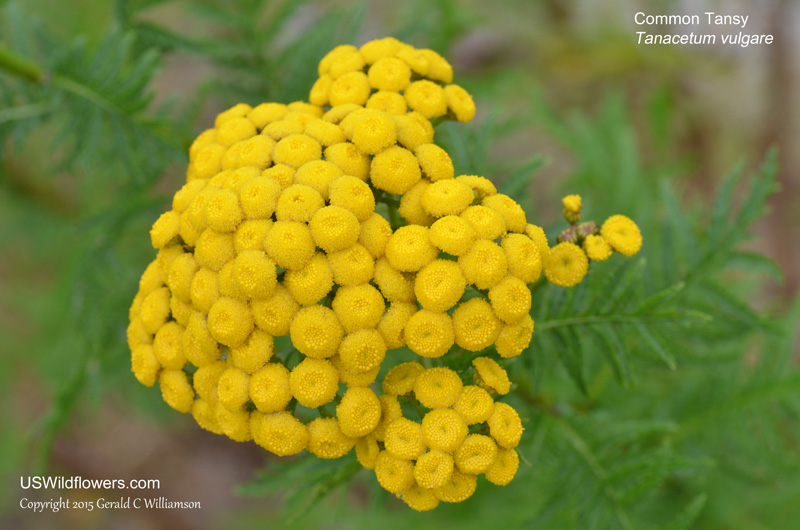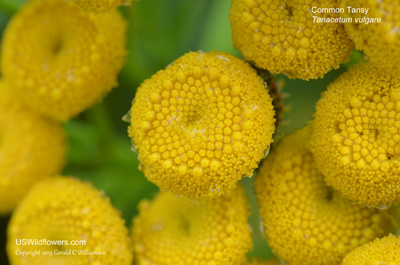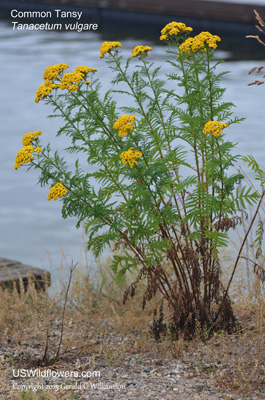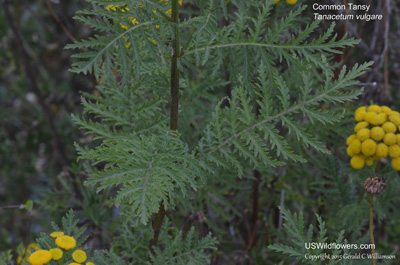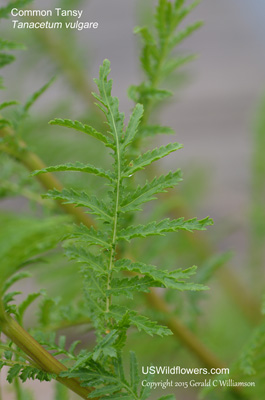Wildflowers of the United States | |||||||||||||
| |||||||||||||
Tanacetum vulgare - Common Tansy, Golden Buttons, Bitter Buttons, Cow Bitter, Garden Tansy. There are 6, 7, or 8 species of Tanacetum found in North America. Of these there are 1, 2, or 3 native species, depending on whether you consider Lake Huron Tansy (ME, MI, WI, parts of Canada; protected due to its rarity in all areas where it is found) to be Tanacetum huronense, and Dune Tansy (CA, OR, WA) to be Tanacetum camphoratum, or both to be forms of T. bipinnatum which is also found in Alaska. Most authorities now consider them to all be T. bipinnatum. The other 5 species, including Tanacetum vulgare, the one presented here, are introduced. Two of those have small ranges, with T. corymbosum found only in Oregon, and T. conccineum in Colorado, New York, and Ohio (neither are listed in Flora of North America.) The other three species have a much wider distribution. T. parthenium has white ray flowers, distinguishing it from the (usually) rayless T. vulgare, and T. balsamita has simple, crenate leaves, while T. vulgare has compound, pinnate leaves.
T. vulgare is the most widespread of the Tansies found in North America, being found in all but 5 of the 50 states (all of them southern), as well as in most of Canada. It is a native of subalpine river valleys in Siberia, introduced to the United States in the 17th century as a garden herb with a variety of uses medicinally (although toxic in large doses) and in the household as an astringent.
| Found in: AK, AR, AZ, CA, CO, CT, DE, HI, IA, ID, IL, IN, KS, KY, LA, MA, MD, ME, MI, MN, MO, MS, MT, NC, ND, NE, NH, NJ, NM, NV, NY, OH, OK, OR, PA, RI, SD, TN, UT, VA, VT, WA, WI, WV, WY  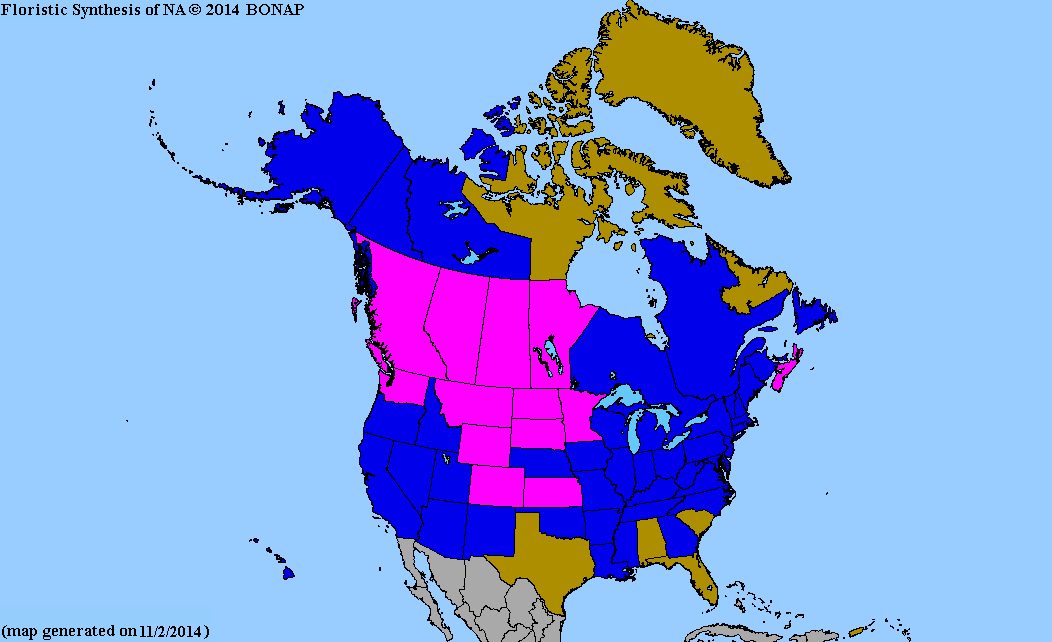 Map courtesy of The Biota of North America Program. Map color key Search Our Database: Enter any portion of the Scientific, Common Name, or both. Do a general Google search of the entire site: #ad #ad
| #ad
| | ||||||||||
|
Commercial / Cookie Notice Looking for Wildflowers for a specific state? Check here: | |||||||||||||
|
All content except USDA Plants Database map Copyright Gerald C. Williamson 2025 | |||||||||||||
Code Update 20230302

